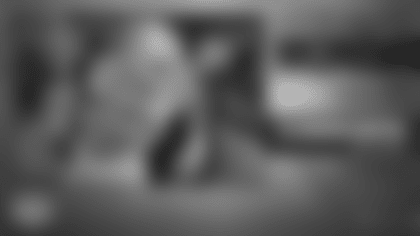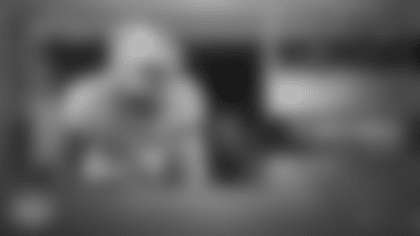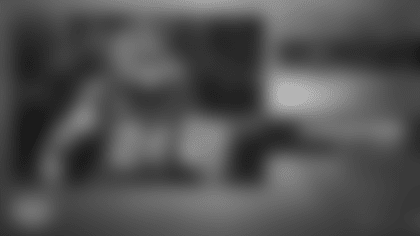The game of football takes place on a rectangular field but really revolves around a triangle: Quarterback, left tackle, pass-rushing end/linebacker.
Geometry plays a part in this. The quarterback has the football and the quickest way to him is a straight line. Offenses often respond by using a spread formation, putting the quarterback in the shotgun and stretching the distance between him and the evil-doers seeking sacks.
Everybody and his cousin Bill will tell you the NFL "is a passing league" and that's born out by all objective measures. Which only reemphasizes age-old concepts, such as the idea of ramming a hole through the quarterback.
Buddy Ryan, architect of the Chicago Bears' Super Bowl-winning defense in the 1980s, learned his lesson in the 1960s from Weeb Ewbank while coaching the New York Jets defensive line. Ewbank manically stressed protecting the quarterback (a fella by the name of Joe Namath). Ryan always said that if it meant so much to Ewbank to keep the quarterback clean, the defense clearly had a mandate to rough him up.
The ball spends more time in the air now than then, situation defenses reign and edge pass rushers come in every size, often relying on speed and quickness over power. That makes the offensive tackle so much more important.
This fact dawned on the NFL in 1993 with the advent of true free agency. Left tackles commanded a huge premium as the protectors of quarterbacks and the value of great pass rushers went up as well.
This confluence of quarterbacks, pass rushers and offensive tackles makes the upcoming NFL draft (April 28-30) a study in the triangle. ESPN draft analyst Mel Kiper Jr. says half of the first round could be consumed by defensive linemen (some of whom become outside linebackers in the 3-4 defense). Throw in five offensive tackles and maybe four quarterbacks and it becomes fairly evident how this game is played and what really counts.
The Redskins seem set at left tackle with Trent Williams, less so at quarterback, and they could use defensive players who can apply the heat as complements to linebacker Brian Orakpo. Orakpo recorded 8.5 of the Redskins' 29 sacks in 2010 in earning his second consecutive Pro Bowl berth but no one else notched more than 2.5.
"If you can't rush the passer in this league, you're going to struggle," says New York Giants general manager Jerry Reese. "Your pass rush can solve a lot of problems in your linebacker corps and in your secondary."
That's Reese's answer for everything and it's a good one. It paid off in the Super Bowl upset of the New England Patriots and it's a path to which he sticks. Did the Giants need Jason Pierre-Paul, another defensive end, last year, when they had Osi Umenyiora, Justin Tuck and Mathias Kiwanuka?
Didn't seem so. But Kiwi got hurt and Pierre-Paul contributed 4.5 sacks and two forced fumbles without ever starting a game. The pass rush didn't hide the weaknesses at linebacker but the Giants finished 10-6 and had 46 sacks while knocking out half a dozen quarterbacks (including Tony Romo and Jay Cutler).
Why the premium on rushing the passer? Well, he's the guy with the ball on every play. There has always been a premium on the passer.
"You take a look at the playoff teams. I don't think there was one that had a question mark at quarterback," says Minnesota Vikings coach Leslie Frazier, who has nothing but question marks (and certainly no exclamation points) at quarterback.
Then there are the protectors. Left tackle and right tackle are not mirror images. Right tackles maul and tend to be more physical run blockers. Left tackles need the quick feet and the ability to extend their arms to steer pass rushers away from their target.
"Defenses aren't stationary, they're constantly moving and so you've got to know how you're going to react to how they're going to react," said Boston College left tackle Anthony Costanzo, a certain first-round choice, during interviews at the scouting combine. "It's almost like a chess game, just trying to stay one step ahead."
Nobody knows right now which way the Carolina Panthers, with the first overall choice, will go. They've got a defensive-minded coach in Ron Rivera but the classic building mold is to get that franchise quarterback ... if he's there. Does Cam Newton fit that description? Does Blaine Gabbert? And does need push them up the board even if they don't meet the full standard of past standouts?
"We do believe we have to have a franchise quarterback to lead your team for the next six, seven, eight years," Rivera says. "We certainly believe that. Do you have to take that guy or is he on our roster right now? That's all part of the evaluation process."
If he's currently on board (Jimmy Clausen?), the Panthers may well take a defensive lineman whose mission in life will be to squash the opponent's franchise quarterback. That's just the way it works.
The quarterback calls out his cadence. The pass rusher anticipates the snap count and angles for a quick step toward his prey. The left tackle springs to life, shuffles his feet, locks those arms out and tries to protect.
Oh, it's great fun when receivers make acrobatic catches. That's the highlight reel. The real action lies in the complicated threesome at the line of scrimmage. It's violent chess, and the king must be protected.
Larry Weisman, an award-winning journalist during 25 years with USA TODAY, writes for Redskins.com and appears nightly on Redskins Nation on Comcast SportsNet. Read his Redskinsblitz blog at Redskinsrule.com and follow him on Twitter.com/LarryWeisman.









